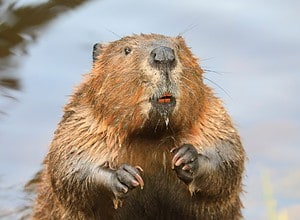When it comes to comparing the differences between a woodchuck vs beaver, you may not be able to tell the difference between these two animals at first glance. However, there are many things that you can use to tell them apart, and you’re in the right place to start learning whatever you may want to know about them. While woodchucks are called woodchucks, it’s beavers that work with wood!
In this article, we will compare and contrast woodchucks and beavers so that you can learn how to tell them apart, whether you are looking at their physical differences or their habits and locations around the world. Let’s get started and learn more about these commonly confused rodents now!
Comparing Woodchuck vs Beaver
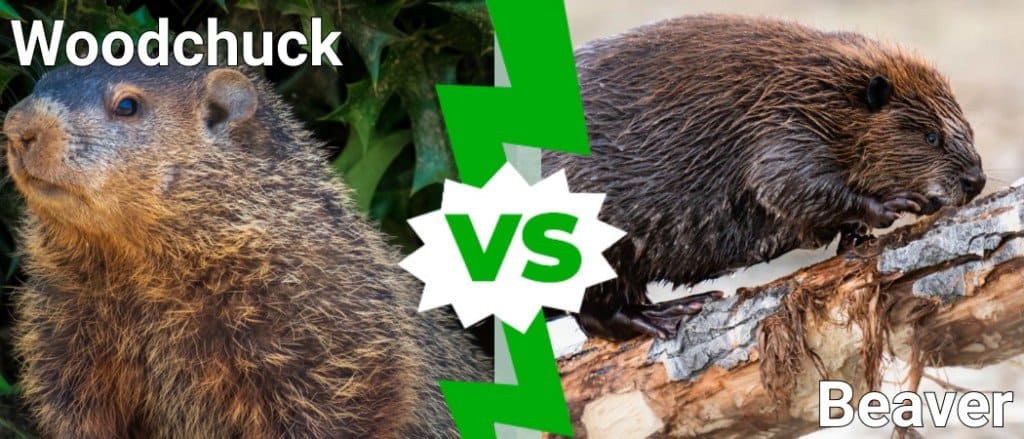
| Woodchuck | Beaver | |
|---|---|---|
| Genus | Sciuridae | Castoridae |
| Location | North America | North America, Europe, Asia |
| Habitat | Grasslands, woodland areas, near suburban areas in burrows and underground | Wild forests and rivers or near ponds; live in dams of their own creation with their family units |
| Appearance | White teeth, stocky brown body, bushy tail; sharp claws for digging | Yellow pointed teeth, stocky brown body, flat rubbery tail; webbed feet for swimming |
| Lifespan | 2-5 years | 10-20 years |
The Main Differences Between Woodchuck vs Beaver

Beavers are nocturnal animals while woodchucks are diurnal.
©iStock.com/Jean Landry
There are many key differences between a woodchuck vs beaver. For example, woodchucks are primarily found in North America only, while beavers are found across North America, Europe, and some parts of Asia. These two creatures also belong to different species. Their overall appearance and preferred habitats also differ, with beavers choosing semi aquatic habitats and woodchucks preferring woodlands and grasslands.
But this is only the beginning. Let’s talk more about these differences in more detail now.
Woodchuck vs Beaver: Lifespan and Habits
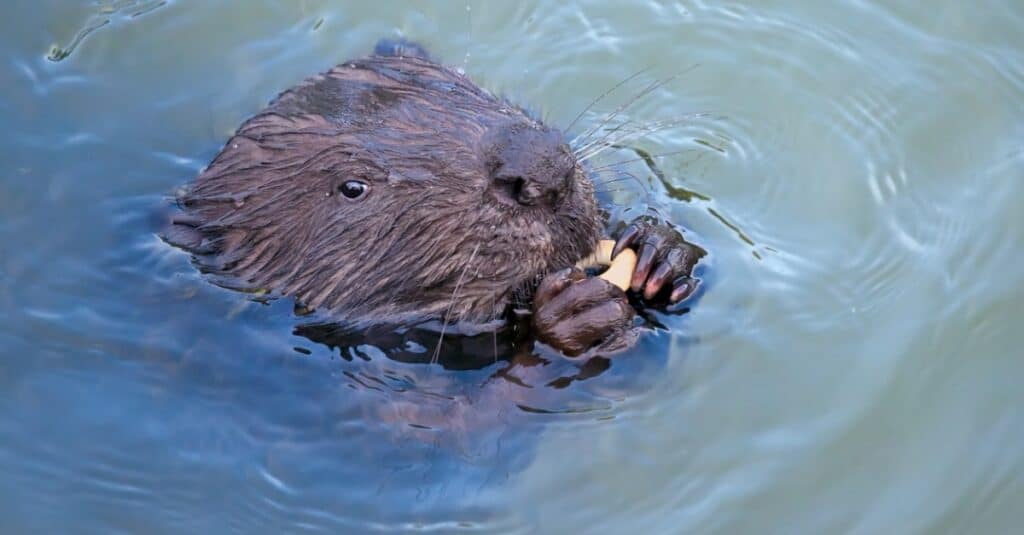
Given that beavers are semi-aquatic creatures, they prefer to live near rivers, ponds, and other bodies of water, while woodchucks prefer forested areas or grasslands for their homes.
©iStock.com/TatianaMironenko
A key difference between woodchucks and beavers you may not know is their overall lifespan as well as their habits as individual creatures. Beavers are nocturnal animals while woodchucks are diurnal. This essentially means that beavers are incredibly active at night, while woodchucks are active during the day.
The life spans of these two creatures differ greatly as well. Woodchucks live an average of 2-5 years, while beavers can live over 10 years, with some living even longer than 25 years! While it depends on whether or not the woodchuck or beaver is wild or captive, this is still an extreme difference in their overall lifespan expectancy.
Woodchuck vs Beaver: Location Found
Another key difference between woodchucks versus beavers is where they are found in the world. Woodchucks are only found in North America, while beavers can be found in North America, Asia, and Europe. This is key when it comes to telling them apart, as you will know whether or not you are looking at a woodchuck based on your location!
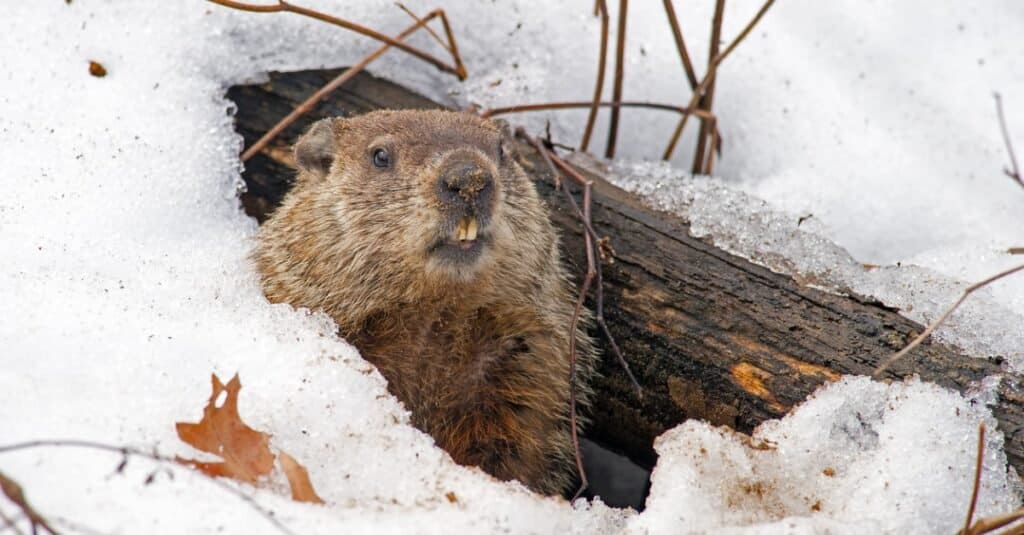
Woodchucks live an average of 2-5 years, while beavers can live over 10 years, with some living even longer than 25 years!
©iStock.com/BrianEKushner
Woodchuck vs Beaver: Habitat
Woodchucks vs beavers prefer very different habitats from one another. Given that beavers are semi-aquatic creatures, they prefer to live near rivers, ponds, and other bodies of water, while woodchucks prefer forested areas or grasslands for their homes. Woodchucks burrow and dig tunnels underground, which means that they tend to avoid semi-aquatic areas, unlike beavers.
It is likely that you know that beavers build dams across rivers and other bodies of water, often altering their local ecosystems in drastic ways. Beavers live in and amongst these dams, which means that they enjoy a watery habitat, unlike woodchucks. On another note, woodchucks also often prefer to live alone, well beavers create intricate familial units to live in their dams.
Woodchuck vs Beaver: Appearance
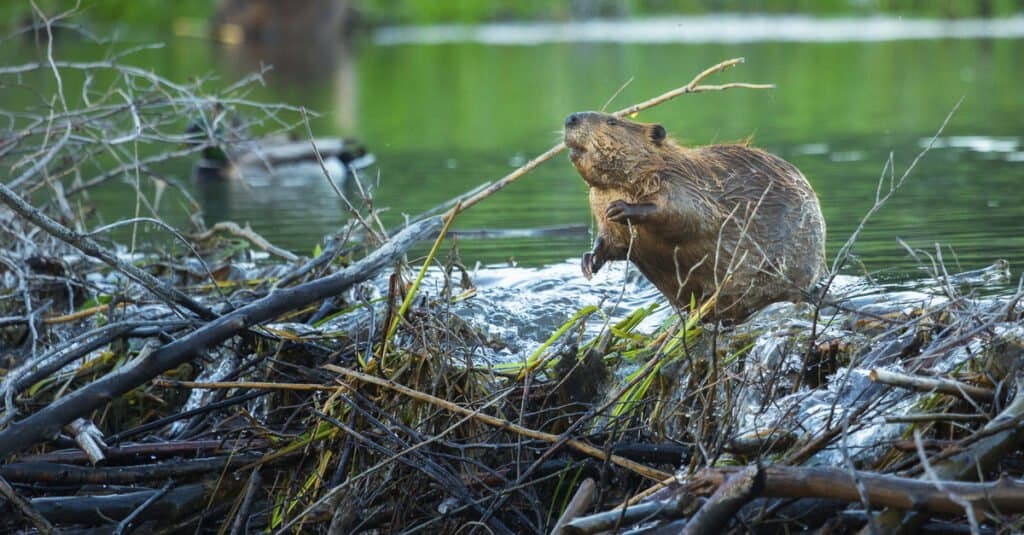
Beavers live in and amongst dams, which means that they enjoy a watery habitat, unlike woodchucks.
©Chase Dekker/Shutterstock.com
Another difference between a woodchuck vs beaver has to do with their physical appearance. There are many ways that you can tell a woodchuck apart from a beaver, whether you are looking at their tail or their feet. Given that beavers live in semi aquatic environments, they are built to handle these types of habitats. Let’s talk more about this in more detail now.
Beavers have flats and rubbery tails that are perfect for navigating rivers and streams, while woodchucks have a more traditional rodent tail that is fluffy and soft. Given the preferred homes of woodchucks and beavers, this also has a huge role to play in the development of their feet. Beavers have webbed feet designed for swimming, while woodchucks have feet with claws designed for digging tunnels and burrows.
There is also a fairly large size difference between woodchucks and beavers. Woodchucks average anywhere from 10 to 25 pounds, while beavers can weigh over 50 pounds. While they both have stocky bodies and are often covered in thick brown or black fur, the density of a beaver is more obvious than that of a woodchuck. Beavers also have pointed yellow teeth made for cutting wood, while woodchucks have white teeth that are rarely visible.
Woodchuck vs Beaver: Species
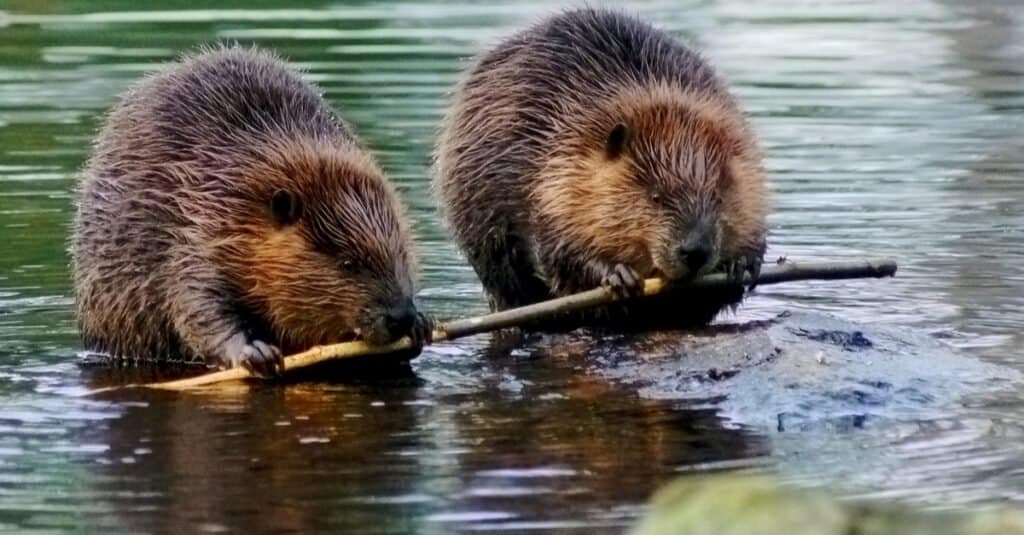
Beavers have flats and rubbery tails that are perfect for navigating rivers and streams, while woodchucks have a more traditional rodent tail that is fluffy and soft.
©P Harstela/Shutterstock.com
A final difference between a woodchuck vs beaver lies in their species classification. For example, woodchucks are members of the Sciuridae family while beavers are members of the Castoridae family. This is an important thing to note because woodchucks belong to a much larger family than beavers do, as beavers are the only ones that make up the Castoridae family. Woodchucks belong to the same family as squirrels, which means that there are a wide variety of different animals in the same family.
The photo featured at the top of this post is © Chase Dekker/Shutterstock.com
Thank you for reading! Have some feedback for us? Contact the AZ Animals editorial team.





